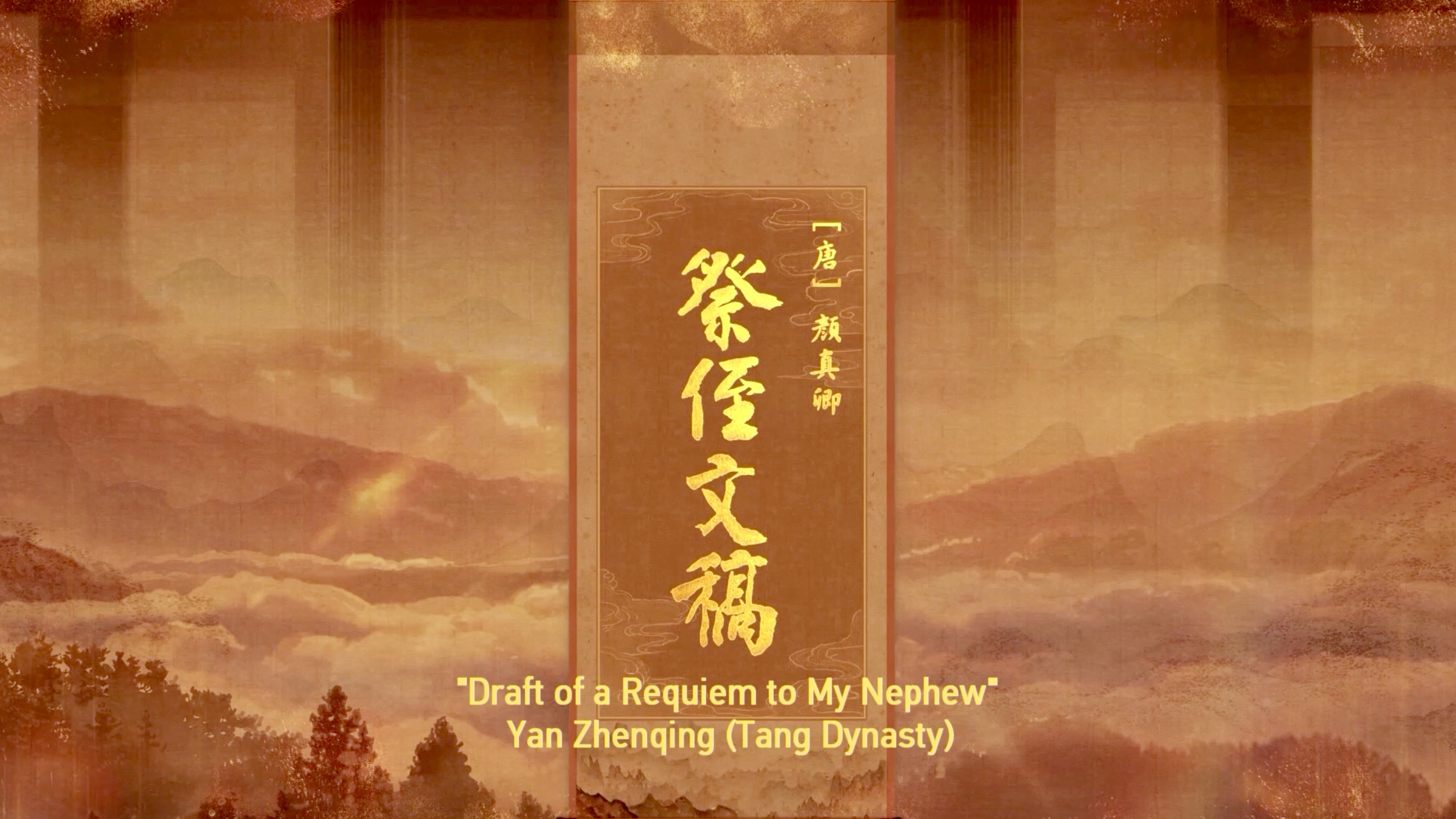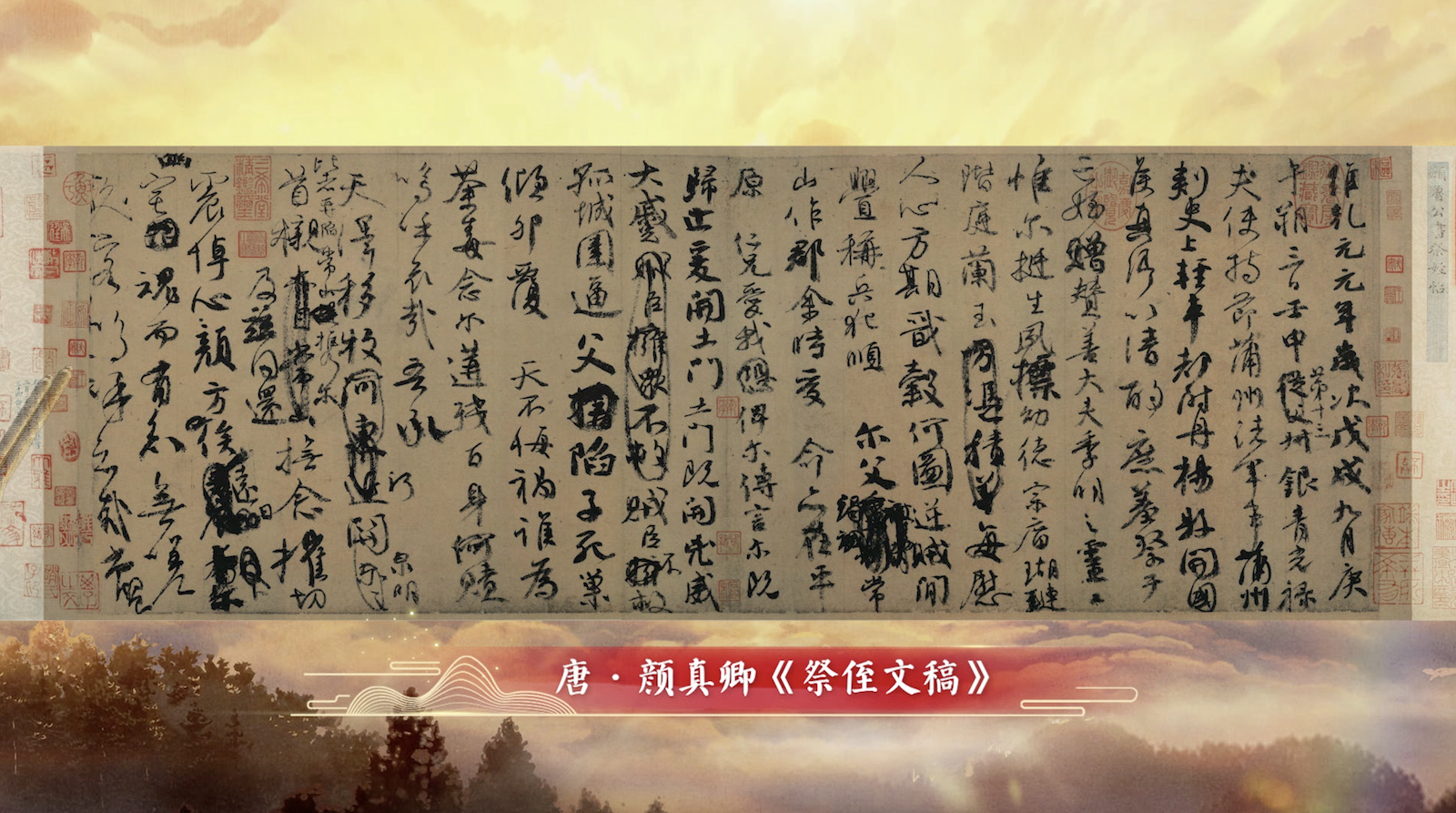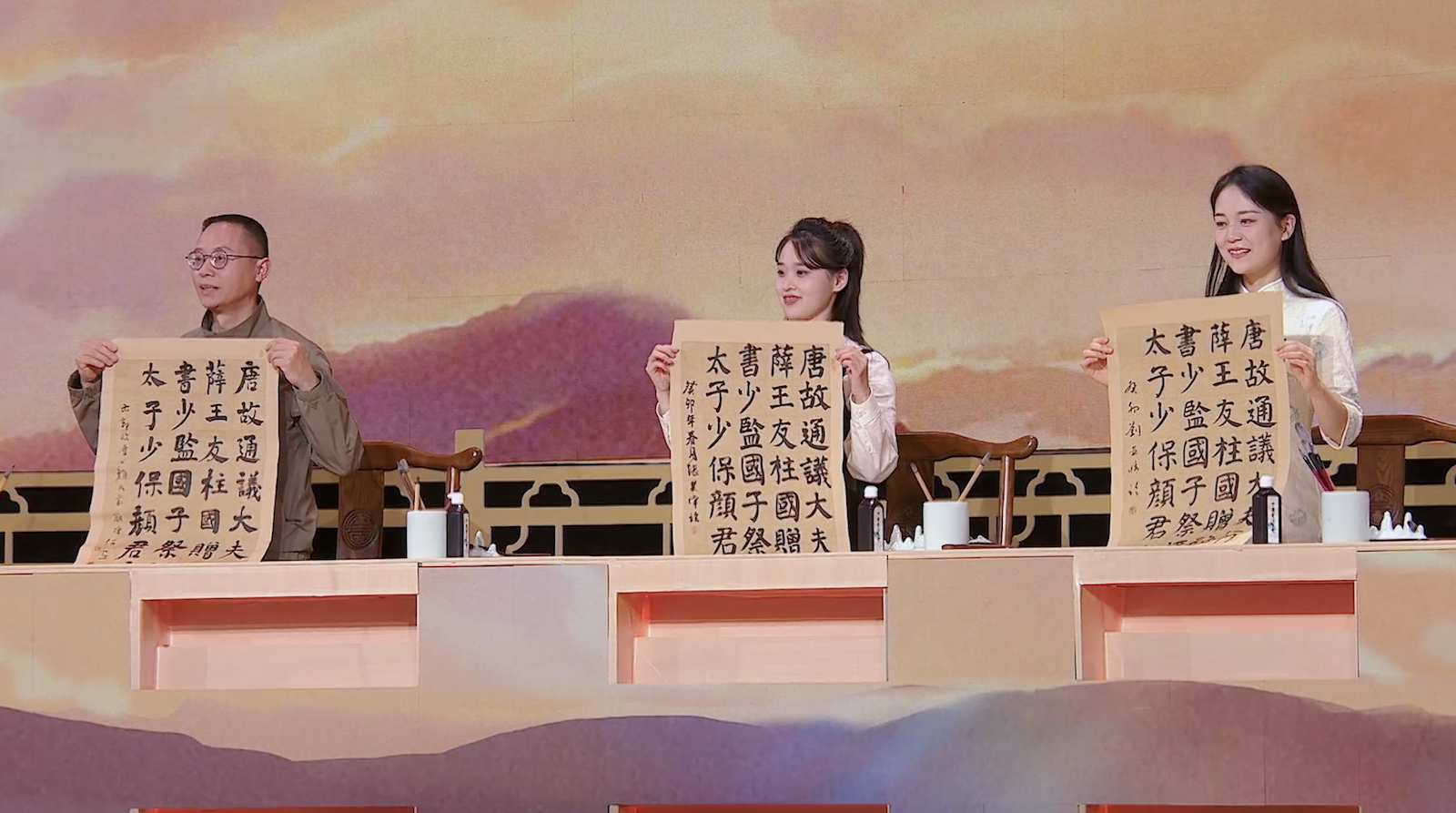Regarded as one of the top three masterpieces in running script calligraphy, "Draft of a Requiem to My Nephew" was written in 758 by renowned Tang Dynasty (618-907) calligrapher and military general Yan Zhenqing. The work served as a tribute to and remembrance of his nephew, Yan Jiming, who tragically lost his life during the An Lushan Rebellion.
12:18

The pivotal An Lushan Rebellion erupted in 755, which reshaped the fate of the Tang Dynasty and had a deep impact on ancient Chinese history. Yan Zhenqing and his relatives engaged in combat with the enemy across the nation. In 758, tragedy struck as his nephew, Yan Jiming, fell victim to therebel forces, with only his severed head ultimately recovered. In great sorrow and tribute, Yan Zhenqing wrote a memorial essay to honor the brave sacrifice of the young warrior.
In the manuscript, there are numerous revisions, giving it the appearance of a sorrowful indictment. However, this did not affect its status in the history of Chinese calligraphy. According to Ye Peigui, a professor at Capital Normal University, many people believe that "Draft of a Requiem to My Nephew" deserves the top place among the "three running script masterpieces." The other two works that earned the title are the "Lanting Xu" by Wang Xizhi from the Eastern Jin Dynasty (317-420), and the "Huangzhou Han Shi Tie" by Su Shi from the Northern Song Dynasty (960-1127).
"This work is greatly revered by those with a deep appreciation for calligraphy and a certain level of expertise in that field. Within the historical context of calligraphy, it belongs to a category known as the 'three running script masterpieces.' While it occupies the second position, many argue that it should be ranked first," said Ye.

"Draft of a Requiem to My Nephew" was written in 758 by the renowned Tang Dynasty (618-907) calligrapher and military general Yan Zhenqing. /CGTN
"Draft of a Requiem to My Nephew" was written in 758 by the renowned Tang Dynasty (618-907) calligrapher and military general Yan Zhenqing. /CGTN
Besides, Professor Ye believes "Draft of a Requiem to My Nephew" exemplifies a noteworthy aspect of ancient Chinese calligraphy – the ability to adapt to varying circumstances and to employ the techniques honed through extensive practice. "As we examine the characters 'Jun,' 'Cheng,' and 'Zhi,' we notice that each stroke is fully extended. This characteristic is consistent throughout the entire piece, resulting in a profoundly three-dimensional and expressive calligraphic style," explained Ye.
Li Gangtian, a professor at Zhengzhou University, pointed out that this manuscript was not intended to be an exquisite piece of calligraphy or a timeless masterpiece. Instead, it was written with a heart filled with sorrow, blood and tears.
"Towards the end, Yan Zhenqing could barely form a coherent character. He was completely immersed in his writing, losing himself in an overwhelming sense of sadness. This piece can be appreciated, but it can never be truly replicated. You can copy it on a surface level, but its deeper essence remains elusive," added Li.

Calligraphy enthusiasts demonstrate their copies of the "Yan Family Temple Stele" by Tang Dynasty (618-907) calligrapher and military general Yan Zhenqing. /CGTN
Calligraphy enthusiasts demonstrate their copies of the "Yan Family Temple Stele" by Tang Dynasty (618-907) calligrapher and military general Yan Zhenqing. /CGTN
Fortunately, Yan Zhenqing also left a series of other calligraphy works for enthusiasts to appreciate and study, in which he demonstrated great vitality and creativity. While in his "Draft of a Requiem to My Nephew" and "Contending for a Seat," there's an element of lightness within the heaviness, bold and robust strokes highlighted in his regular script and stele inscriptions. To capture the spirit of Yan Zhenqing's characters, Professor Li advised calligraphy enthusiasts to adeptly wield their dynamic and vigorous energy while avoiding rigidity.